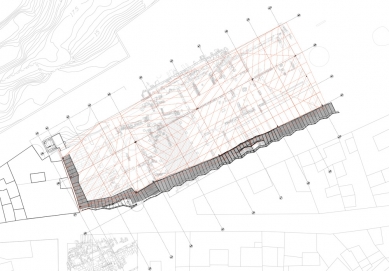
Deck over a roman site in Cartagena

 |
This cover is certainly another piece in the historic area of Cartagena whose main architectural challenge is to reconcile very different architectures; from the roman time, passing through baroque to nowadays, making all the interventions vibrate together in the neighborhood. It is a transition element, between very diverse urban conditions: in size, material and structure; from the dense city centre to the sloping park.
The primary goal of the work is to respect the existing remains, using a long-span structure, which requires the least amount of support for lifting the cover. The intervention unifies all the remains in a single space, allowing a continuous perception of the whole site. The cover also generates a new urban facade in the partition wall. The project also pursues a sense of lightness and is conceived as an element that allows light inside. The inner layer is built with a modular system of corrugated multiwall translucent polycarbonate sheets. The outer layer, constructed with perforated steel plates, qualifies the incidence of light and gives a uniform exterior appearance.
Besides to the steel structure, the building set includes an elevated walkway parallel to the street, that is accessible – like all the built tours - for disabled visitors. It is a very light structure hanging from steel beams. Conceived as a glass box, with a faceted, partially visible geometry, it makes up the street façade and allows a view of the ruins from three meters high as this high path set out an overall vision of the roman remains.
0 comments
add comment
















































